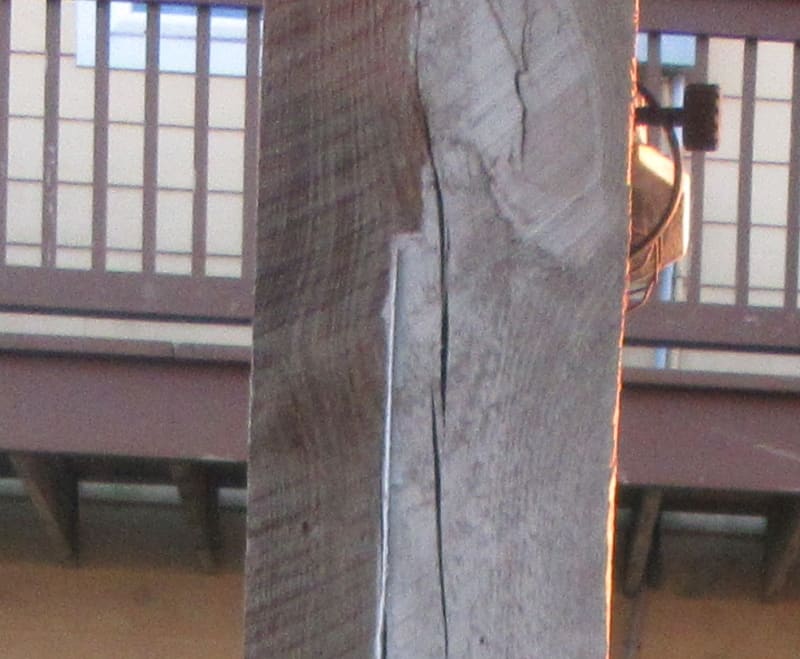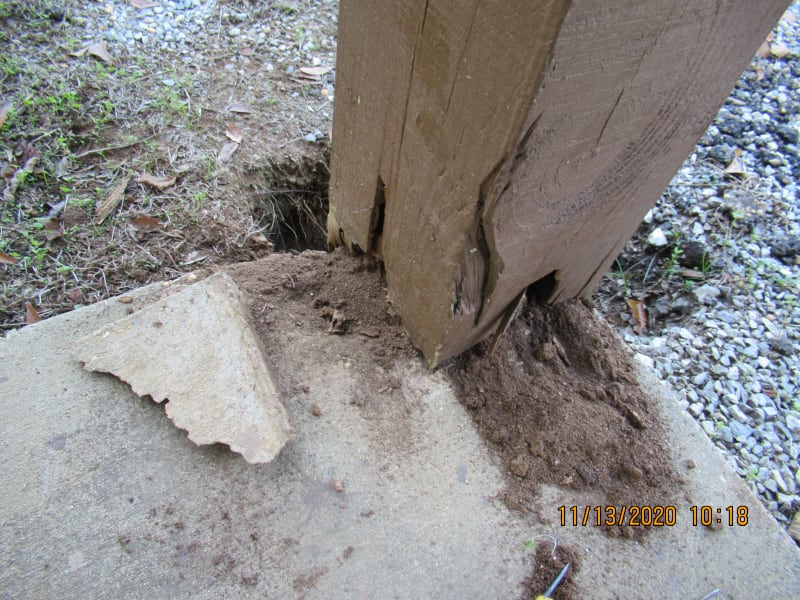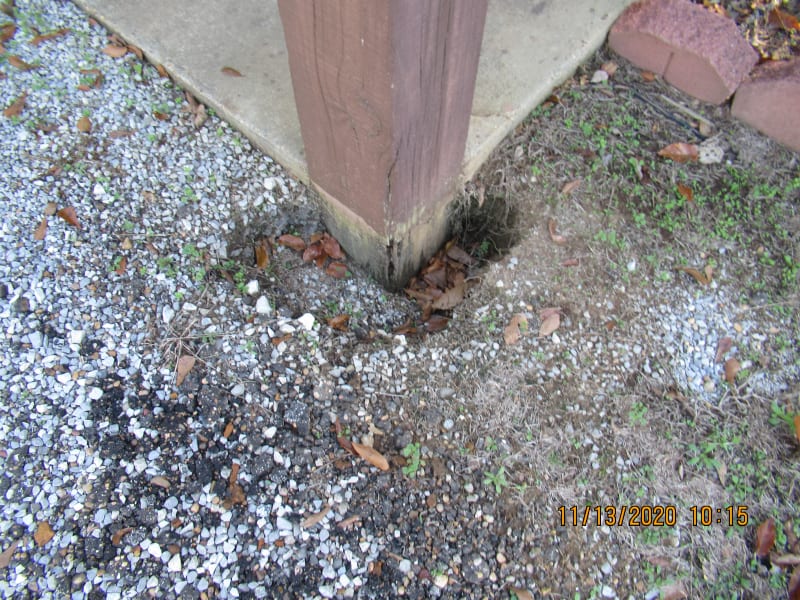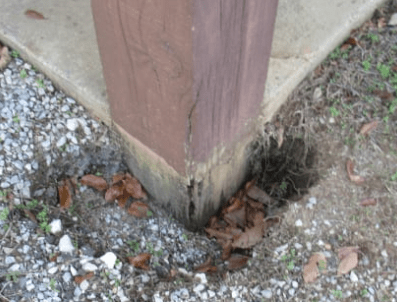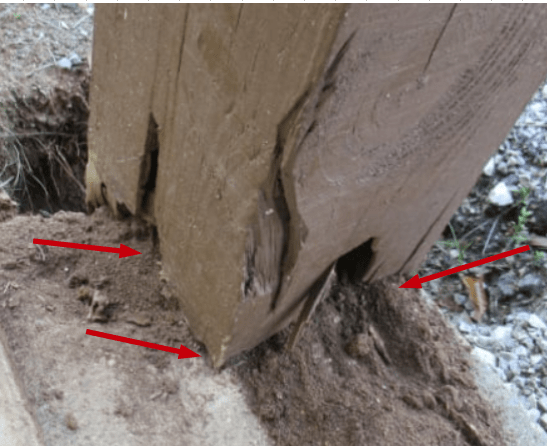I have about 20 timber piles that all look the same except for 1. These have been in place for several years but most of them have very few splits and of the splits they do have, they are minor in width. 1 pile is noticeable worse than the others.
I was wondering if it is reasonable that excessive wind could make these worse in magnitude if the pile itself was not a very good grade. The splits run on a slight slope and one larger split runs directly to a large through bolt.

I was wondering if it is reasonable that excessive wind could make these worse in magnitude if the pile itself was not a very good grade. The splits run on a slight slope and one larger split runs directly to a large through bolt.


